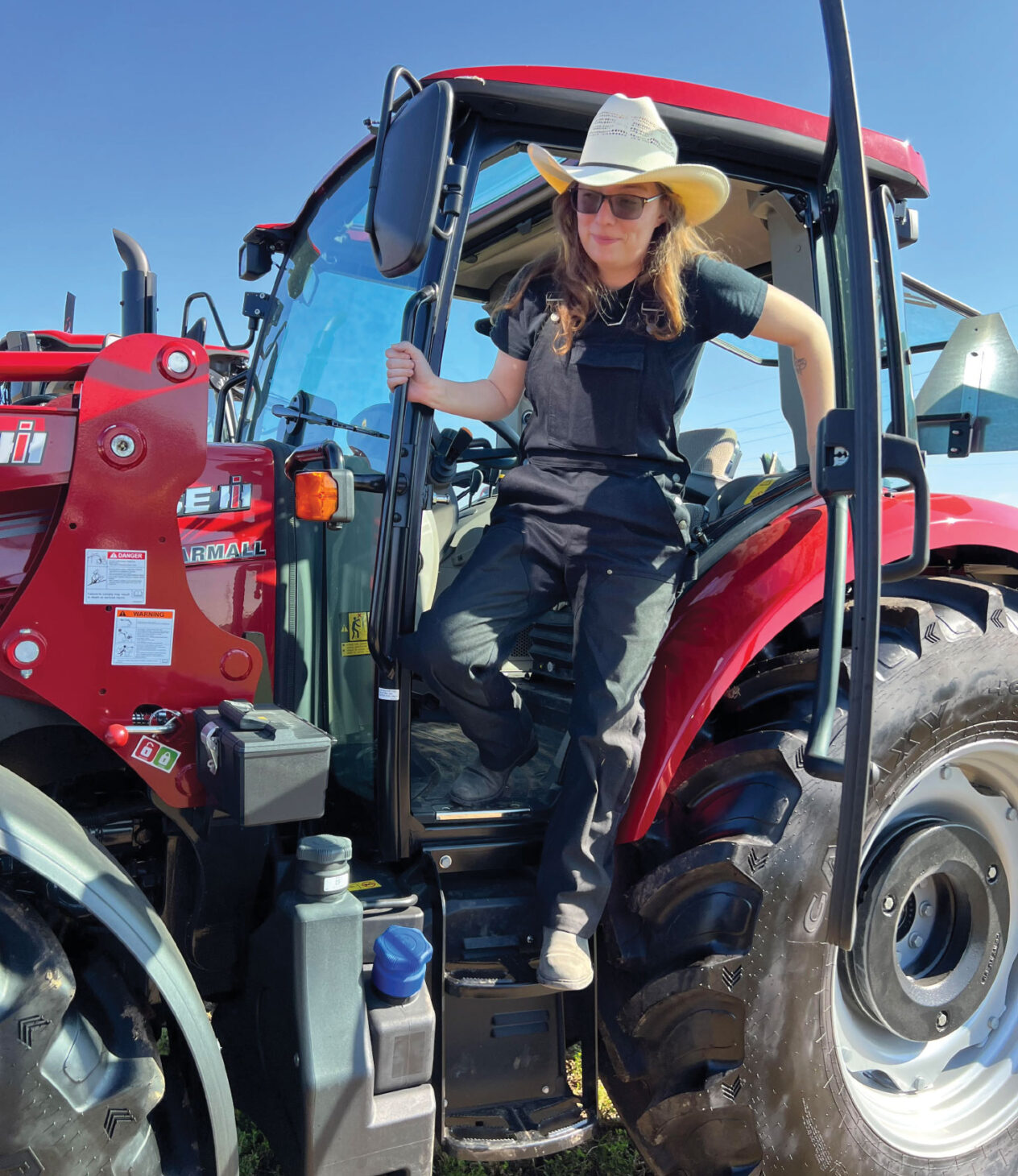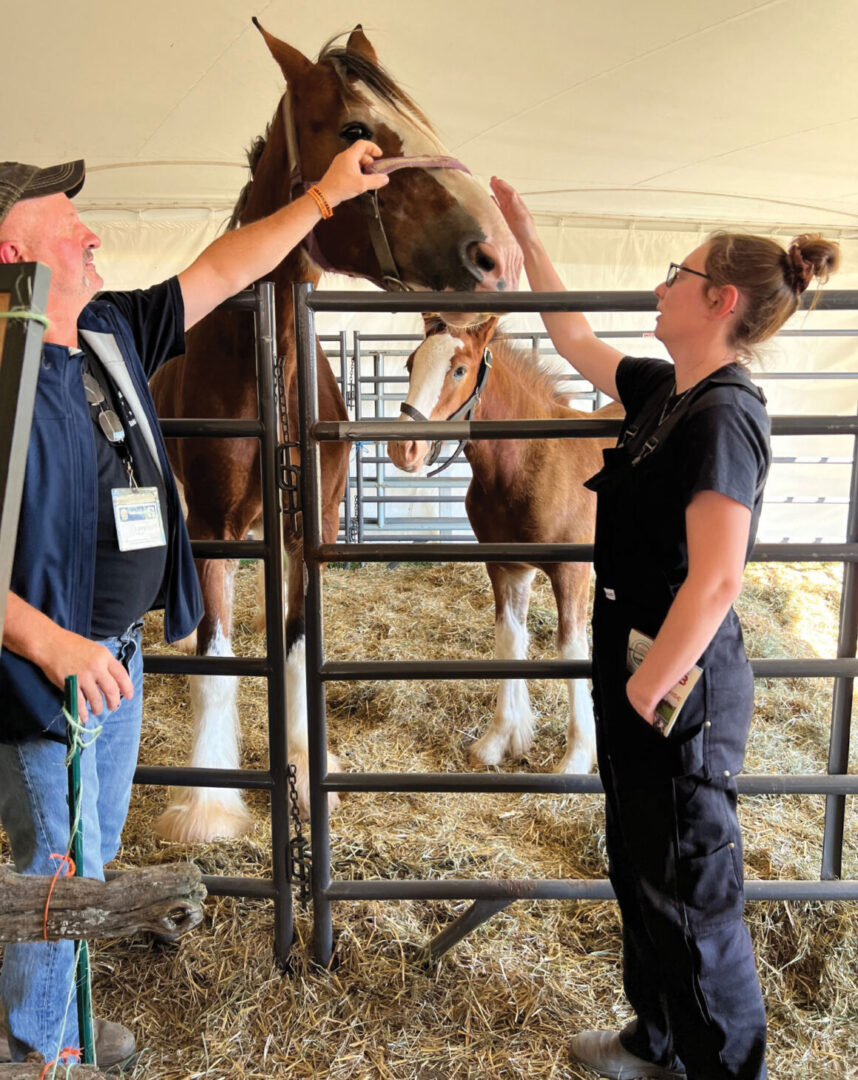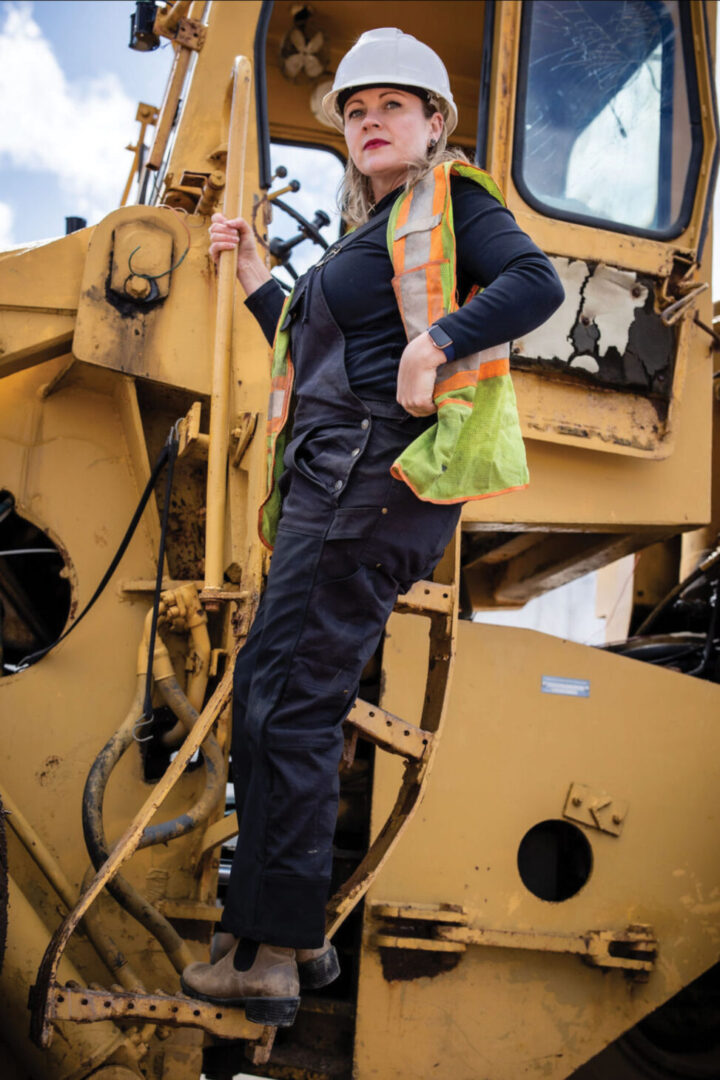
The number of women entering the trades in Canada is slowly but surely increasing as industry strives to recruit from this almost untapped source of workers. However, to keep them, employers must provide a rewarding and inclusive work environment. This can be as simple as providing safe and functional workwear – something that’s currently not easily accessible to most women in the trades.
Dianne Finnigan had been a retail manager for more than 30 years in Guelph, Ont., when her daughter, Chantel, decided to pursue a career in masonry, encouraged by the efforts of the industry to open the trades to women. It wasn’t long before they encountered an unexpected barrier to this goal.
“We went shopping for workwear, but everything available was sized in scaled-down versions of men’s measurements. Nothing out there came close to fitting my daughter properly,” said Dianne. “The clothing was sized for men and didn’t begin to fit. As we looked into it further, we soon realized that this is a huge problem facing women working in the skilled trades, every sector from agriculture to carpentry to horticulture.”
In 2022, the Canadian Standards Association (CSA) surveyed more than 2,500 women involved in the trade industry and found that almost 40 per cent of all worksite injuries for women are due to ill-fitting workwear, especially over-sized clothing with long sleeves that can catch on equipment and long crotch-lengths that inhibit climbing up ladders and into tight spaces.

“Employers also need to understand that yes, they might get a deal buying PPE in bulk, but over-sized, ill-fitting PPE can be a safety hazard, and in the long run they’re paying for this through workers’ compensation,” said Dianne.
According to the CSA report, the three most common problems the Canadian women surveyed have with their PPE are: it does not fit properly (50 per cent); it is uncomfortable to wear (43 per cent); the selection of women-specific PPE is inadequate (35 per cent). Almost one-third don’t wear all the required PPE at work because of issues with fit. Nearly 40 per cent reported using a workaround to improve the fit such as using rubber bands, safety pins and duct tape to shorten pant legs to avoid tripping.
Dianne decided to do something about the situation. If these women couldn’t buy properly fitting workwear, she would learn how to make and provide it. She took professional sewing classes to learn garment construction, patternmaking, sourcing fabric and notions, and manufacturing.
“I wanted to make sure that I was going to do this right, that I would know what I was doing and that it would be good quality,” she said.
In 2020, Dianne and her daughter founded The Dirty Seahorse, a company dedicated to designing and producing women’s workwear that would be safe and comfortable in both fit and materials. The name was suggested by Dianne’s son, who is also in the trades, to reflect that women don’t mind getting their hands dirty and the role reversal of the seahorse.
“We went shopping for workwear, but everything available was sized in scaled-down versions of men’s measurements.”
Dianne Finnigan, The Dirty Seahorse
Research into the design of women’s clothing shows that there are definite anthropological differences between the sexes. Women are not simply scaled-down versions of men, and there are no consistent standards for sizing in PPE across Canada. Dianne had to start from scratch.
“I measured Chantel from head to toe to create a feminine profile,” said Dianne. “It took some trial and error before we had a pattern with which we could work. After that, I did nine months of research and interviewed women who work in the skilled trades to get their ideas on features they want for their clothing. The workwear prototypes went out to three colleges across Ontario where apprentices could test them and come back with their feedback on what worked, what didn’t work and how to make it better.
“It took four years to develop our line of workwear and we finally have the first products for sale online on our website,” said Dianne.
“Good workwear design not only depends on range of motion, but also job function. For example, forestry, landscapers, HVAC, electricians … this work requires being on their knees a lot, so we put knee pad pockets into the knees of the coveralls for ease of removal when not needed. We put panels onto the front that can’t be cut with a knife and are water-resistant. With the elastic cinch waist, our overalls can be adjusted for the season, allowing more space for extra clothing in winter or adjusting through pregnancy. Another thing that makes our overalls different is that we built a secret feminine hygiene pocket for sanitary napkins and tampons.”
Zenith overalls are specifically made for comfort, durability and functionality with lots of movement and is in eight sizes. “Our overalls come in two colours with elastic straps and flex suspenders that won’t get caught on things,” said Dianne. “They have a total of 14 specialized pockets, double cuffs, double front panels and double hammer loops. These overalls are made to last.”

Also now available is The Dirty Seahorse Workwear Hoodie and the Crew Neck Sweater, both made with a built-in secret pocket. The basic T-shirt with its soft touch has a flattering fit made specially for women. The Dirty Seahorse is partnering with various sectors, including fire-resistant underwear adapted for female firefighters, boilermakers and anyone who works at high temperatures.
“The biggest demand right now is for horticulture and agriculture, but soon we’ll also have a design specifically tested for welding wear,” said Dianne. The work of The Dirty Seahorse doesn’t stop there as the company continues to find its place as a niche brand designed for only about five per cent of the trades workforce.
“We went to Ottawa in May [last] year along with Tania Johnston, CEO of Mechanical Contractors Association of Canada to advocate for better standards for PPE, not only for women but for the whole industry. One size does not fit all – not for men or for women. I explained to the provincial and federal governments, from a mother’s perspective, all the problems associated with workwear. This is a global problem, and I’ve had people from the U.K. and Australia reach out to me,” said Dianne.
“We are expanding and always developing new ideas. I have a board of advisors of about 10 people, and we involve women in the trades in everything we do. They are the cornerstone and the backbone of this company. This is why we started it, to help support women in the trades.”